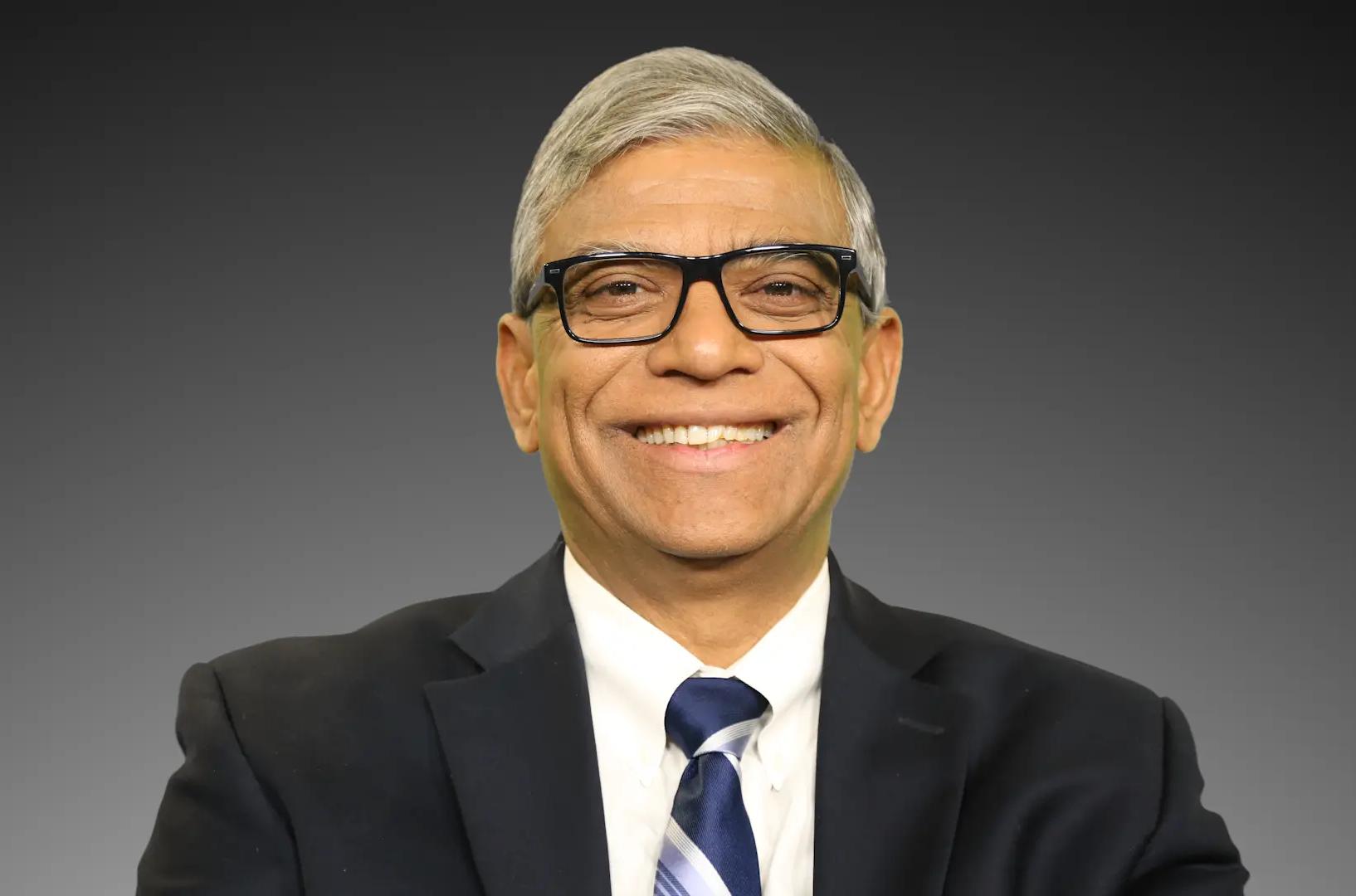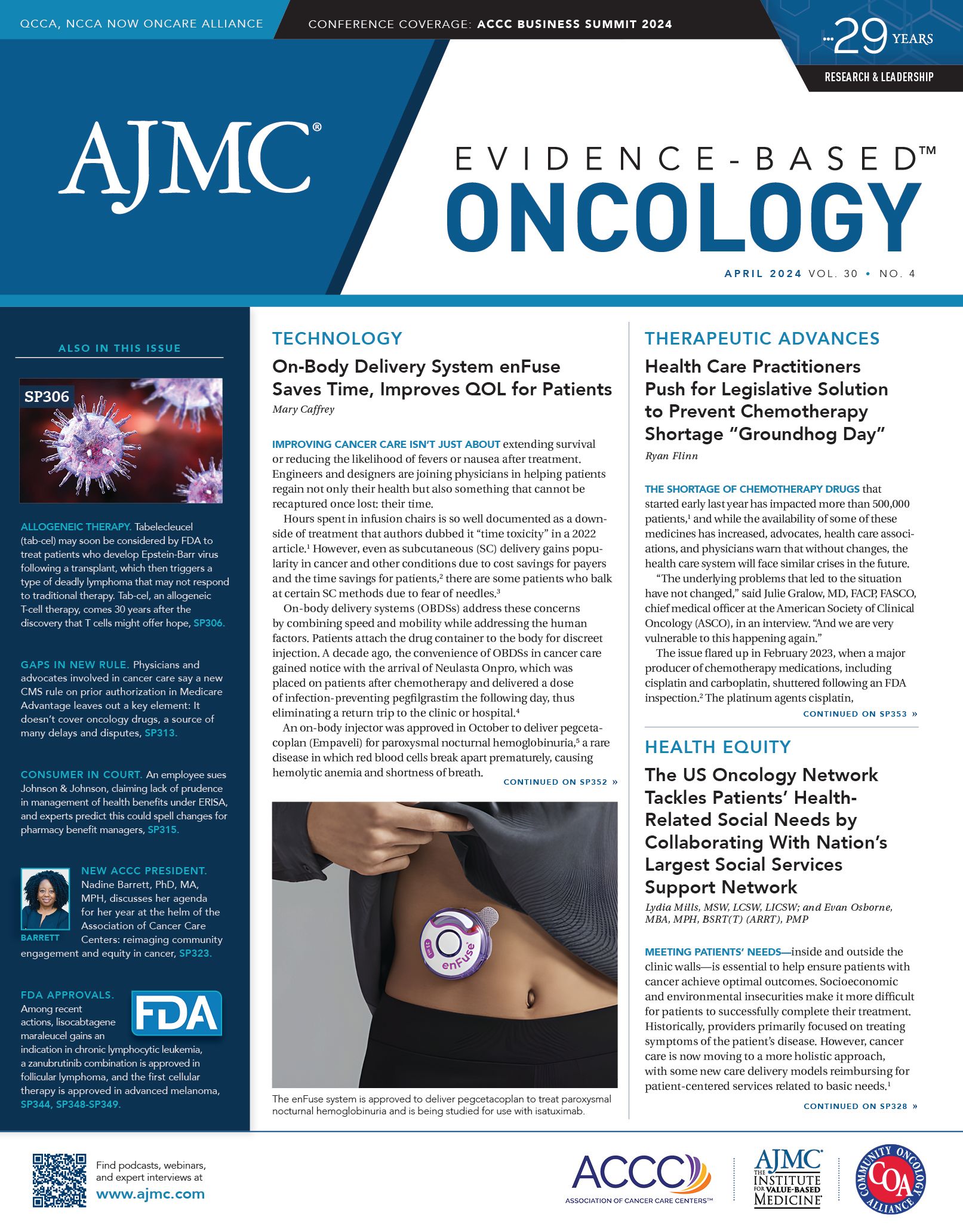- Center on Health Equity & Access
- Clinical
- Health Care Cost
- Health Care Delivery
- Insurance
- Policy
- Technology
- Value-Based Care
FROM THE EDITORS: The Role of Biosimilars in Advancing Access, Financial Health, and System Sustainability
US health care spending surpasses the rest of the world, both in total cost and on a per capita basis. However, outcomes do not equal spending; in some cases, our health system underperforms other countries.
Kashyap Patel, MD | Image credit: COA

In 2022, US health care spending rose to $4.5 trillion and is projected to reach $6 trillion in 2027.1 Rising health care costs not only poses a threat to sustainability, but also threatened outcomes due to increased financial toxicity. The US biologics market has grown 12.5% annually over the last 5 years on an invoice-price basis, faster than nonbiologics. In 2021, the US spent $568 billion on medicines including $260 billion on biologics. Spending on biologics comprise 46% of total pharmaceutical spending but only 2% of total prescriptions.2
Thus, creating competitive markets in biologics would address multiple challenges. Entry of biosimilars in 2015 in US health care (almost a decade after European Union in 2006) has a potential to save close to $181 billion provided appropriate assimilation through multiple tiers from manufacturers of biosimilars, smoother regulatory approvals, provider acceptance, and payer and pharmacy benefit manager (PBM) cooperation.
Congress passed the Biologics Price Competition and Innovation Act 2009, creating a pathway for biosimilars entry and approvals in the US. Biosimilars have no clinically meaningful differences in safety, purity, or potency. They must undergo the same rigorous standards set forth by the FDA for reference biologics. They have enormous potential to address financial toxicity at an individual level, insurance level, and health care system level. Biosimilar competition may help decrease reference product pricing. Due to archaic implementation, 6 years passed before the first biosimilar approval occurred in 2015. Despite slower initial uptake, biosimilar launches in the last 5 years have generally been more successful. This fact raises hope that savings and patient access could increase substantially.
While uptake has been uneven across specialties, oncology has led biosimilar adoption. Pegfilgrastim and epoetin alfa biosimilars, launched in 2018, have seen moderate uptake, achieving 37% share of molecule volume in the first 3 years. Pegfilgrastim biosimilar share has continued to rise slowly. The 3 other molecules with biosimilar launches in 2019—bevacizumab (82%), trastuzumab (80%), and rituximab (67%)—achieved significant uptake within the first 3 years.
Savings from biosimilar adoption could range from $38.4 billion to $124.5 billion from 2021 to 2025, according to a 2022 study.3 Biosimilars cost 30% less than reference biologics on average. This is key, given the major shift that occurred in 2023, with the launch of biosimilars for some of the most widely used drugs in the world.4
However, despite huge success in the oncology biosimilars arena, the adoption of biosimilars in other medical specialties has not been a huge success. Infliximab has seen the lowest adoption of biosimilars, with volume share at 3% after 1 year and rising slowly to 13% after 3 years.
The introduction of lower cost biosimilars has led to declines in overall molecule costs per unit of biologic and/or biosimilar. This has over time, driven down costs for originators as well.
Biosimilars were one of the first realistic alternatives that would allow the provision of appropriate affordable care to tens of millions of Americans in multiple ways from reducing out-of-pocket costs to impacting financial toxicity in a positive way. We all have a collective responsibility of embracing, adapting, and administering biosimilars to address issues from the ecosystem level, from the individual patient to the health system across the country.
Despite rising number of beneficiaries now on Medicare Advantage plans, we have not seen the full benefit of biosimilars due to policies of PBMs advising insurance plans. PBMs have started creating favorites and preferred lists, limiting coverage to 1 biosimilar (and frequently, the most expensive), placing an unnecessary burden on providers to pass higher out-of-pocket costs to consumers. Nevertheless, hope is eternal, and eventually payers and lawmakers will realize the obstacles to fair and just place for biosimilars in day-to-day use and unfair practices will be corrected.
A version of this commentary first appeared on The Center for Biosimilars®, published by The American Journal of Managed Care.
Author Information
Kashyap Patel, MD, is the CEO of Carolina Blood and Cancer Care Associates, based in Rock Hill, South Carolina. He is the immediate past president of the Community Oncology Alliance and associate editor of Evidence-Based Oncology.
References
1. CMS. National Health Expenditures: 2022 Highlights. 2023. Accessed March 1, 2024. https://www. cms.gov/files/document/highlights.pdf
2. Biosimilars in the United States 2023-2027: Competition, savings and sustainability. IQVIA. January 31, 2023. Accessed March 1, 2024. https://www.iqvia.com/insights/the-iqvia-institute/reports-and-publications/reports/biosimilars-in-the-united-states-2023-2027.
3. Mulcahy A, Buttorff C, Finegold K, et al. Projected US savings from biosimilars, 2021-2025. Am J Manag Care. 2022;28(7): 329-335. doi:10.37765/ajmc.2022.88809
4. New Report finds biosimilars could save states billions of dollars annually. Biosimilars Forum. October 2021. Accessed March 1, 2024. https://biosimilarsforum.org/2021/10/13/new-report-finds-biosimilars-could-save-states-billions-of-dollars-annually/

Price Transparency With Gaps: Assessing the Completeness of Payer Transparency in Coverage Data
December 9th 2025In analyzing 2025 Transparency in Coverage (TIC) files from national insurers, the authors found vast payer-level differences; overall, physician/outpatient data were more complete, and hospital inpatient data were less complete.
Read More
